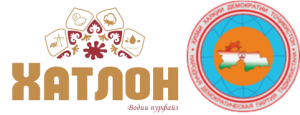Nosiri Khusrav
NOSIRI KHUSRAV DISTRICT – THE AREA OF CRAFTY PEOPLE
A brief historical information. Nosiri Khusrav district is located in the northern part of Khatlon region and it has been established on February 29, 1996 on the basis of the part of village council of Shahrtuz district. This district has been called Beshkent until 2003 and on September 8, 2003 by the recommendation of the Founder of Peace and National Unity, the Leader of nation, the President of the Republic of Tajikistan, the Great Chairman of the People’s Democratic Party of Tajikistan, respected Emomali Rahmon, the district has been called Nosiri Khusrav. The center of the district is Bahor town. In its western part, the district borders with the Republic of Uzbekistan. The district consists of 1,9 thousand square kilometers; its administrative and territorial structure consists of three village councils and 26 villages. The total area of the irrigated lands of the district is 11022 hectares.
Attractive travelling areas. There are 32 historical monuments within the district, belonging to different periods of the time. Beshkent castle is famous as an administrative center of the valley and “Chiluchorchashma” (forty-four springlets) sanatorium-saint place is known even out of the country. “Chiluchorchashma” covers the number of legends, epos, the folklore superstitions and divinations and by its peculiarities, it divides into 17 groups. The first group includes three springlets and has the title of “Muyin”. The believers of a folk superstition, shave the hears of their children there, as if, with an intention of wishing them health and long life, then they sacrifice and promise something there. Near this springlet, there is a weeping willow growing there, that according to the legends, it has grown to be 1054 years old and it is considered the oldest tree in Central Asia. In 1980, this tree has been turned 1016 years old and has been recorded in the Guinness Book of Records. Another group of the springlets is called the “the nose blood”. The people, who suffer from the nose bleeding, go to wash their nose by that springlet water and will be well cured. The third group includes four springlets, which are used by the people, who catch cold and fever, for curing themselves. Two other springlets are the ointments of the patients with pain in bones and four other springlets are used to release malaria. It is interesting, that their waters completely differ from each other. Among the springlets there are stones for an elevation of 2-3 inches, which separates them from each other.
There is another springlet, which has an extraordinary water. From the 11th to 29th of January, its temperature ranges to 40 degrees. On the 29th of January, the spring-let suddenly dries up and by the 8th to 9th of May its water comes again. According to the local people’s thoughts, all 44 springlets have the various types of therapeutic natures and they heal all types of the human illnesses. There are big types of fishes live in Chiluchorchashma, that their length is almost 1 meter and their weight is from 16 to 18 kg. Their snakes have the length of 60-70 cm.
It is said, that Tusi, the Hercules (the hero in Ferdowsi’s Shahnameh) devoting to the numbers of Wisa’s (his lover’s) plaited hairs, which consisted from 44, slashed and drilled the hill with a sword 44 times and obtained an underground water source out there. According to another legend, as if under the command of Hazrat (saint) Ali, the body of Hazrat (saint) Ali’s stud-groom Boboqamar, was buried in “Chiluchorchashma”. Since that day, “Chiluchorchashma” has been considered as a visited place of Hazrat Ali and a pilgrimage.
Infrastructure service. There are 1 Culture Palace, 1 rural Culture Palace, 1 central library, 11 libraries, children’s art school and 1 group of talents, named “Mavzuna”, serve the population in the district. Also, there are 26 educational institutions (general secondary schools), 1 lyceum of the gifted children and 5 preschool institutions (primary schools) are active in the district. Regarding the services, there is a market near the saint place “Chiluchorchashma”, where one can find people’s all the essential items there and also there are lots of canteens, which can provide the necessary services to the tourists. There is a terminal of passengers, located near the saint place and the drivers of the private vehicles serve the customers. As well as, there are market and trading centers, a hotel, the petrol filling station, etc. in the center of the district.
Folk craftsmanship and skills. People in the district are engaged in a lot of craftsmanship, such as: knitting Badakhshan’s socks; mat-knitting (out of the colored cotton threads), the colorful (handmade) mats; zarduzi (embroidering with the golden color threads); chakanduzi (needlework); producing the jewelry (necklaces and bracelets) and the souvenir knives, which are offered to the tourists and bikers.
The particularities of the district. There are high mountains in both directions of the district and Amu Darya flows under those high mountains. Those mountain ranges are named Tyumtogh and Ariqtogh, where the tourists can see many tents, can be familiar with the pastoral life of the tent shepherds, behind those mountains.
Search
Archives
